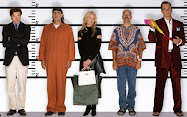
New York Times wrote a most wonderful review of The Best Stories of J. G. Ballard. Below is an extraordinarily complimentary excerpt:
Most are identified with an unlucky future-present, where functions have gone awry. In Mr. Ballard's cosmos, science has become a crippled dog. Our energy has begun to drain out, man, the magician, is very tired. The human race is like "Cahban asleep across a mirror smeared with vomit." All our tinkerings, the wonders we have produced, will finally bring us back to the Stone Age. "Five thousand centuries from now our descendants, instead of being multibrained starmen, will probably be naked prognathous idiots with hair on their foreheads, grunting their way through the remains of the Clinic like neolithic men caught in a machine inversion of time."
His protagonists tend to be displaced persons of one sort or another: restless students, lonely ex-pilots, neurosurgeons on the decline. Uncomfortable with ordinary definitions of time and space, they try to escape the maddening scrim that holds the world together -- find scattered bits of psychic truth for themselves and puzzle out the meaning of their existence. They're connected to some institution -- a library or a hospital clinic, and they live in a vast nightmare city that has no beginning or end. They fail at whatever they seek, as outlaws, they are usually imprisoned, or else they enter the "black holes" of their individual psyches. The turn to silence, they go mad, or they die. [...]
"Concentration City" and "Billennium" are a kind of homage to Kafka. It's almost as if Gregor Samsa and Land Surveyor K had stepped out of Kafka's books to inhabit J.G. Ballard's perverse landscapes. Like Kafka, Mr. Ballard deals with the loss of spirit of a mummified world that has its own macabre energy. The gentle ones disappear, they turn into bugs, or are trampled into nothingness. They long for the sleep of the dead.
 The image above is from Ballardian.com, and it's a triple simulacral reference. Firstly, it references the story "The Drowned Giant." Secondly, it references the drowned giant itself in relation to the tourist humans. And thirdly, it references the actual Lego, suggesting that the giant Lego person is just as real as the drowned giant, who is just as real as humans. The image is quite Ballardian in of itself.
The image above is from Ballardian.com, and it's a triple simulacral reference. Firstly, it references the story "The Drowned Giant." Secondly, it references the drowned giant itself in relation to the tourist humans. And thirdly, it references the actual Lego, suggesting that the giant Lego person is just as real as the drowned giant, who is just as real as humans. The image is quite Ballardian in of itself.









.jpg)


No comments:
Post a Comment